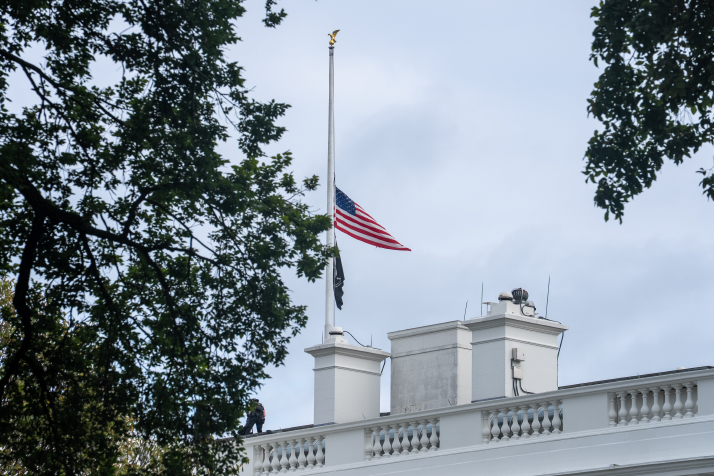| Pacific Dialogue |
| Gun violence: America's repeated tragedy | |
|
|
 A U.S. flag flies at half-staff at the White House in Washington, D.C., on September 10 to mourn Charlie Kirk, a political ally of U.S. President Donald Trump. Kirk was shot and killed earlier that day while delivering a speech at Utah Valley University in Orem, Utah, the U.S. (XINHUA)
The White House lowered its flag to half-staff on September 10 after a shooting claimed the life of Charlie Kirk, a 31-year-old conservative activist who was fatally shot while speaking at an outdoor debate at Utah Valley University in Orem, Utah, the U.S., earlier that day. For many, the lowering of the flag, now a kind of shorthand for national grief, felt like a ritual repeated far too often as a result of firearm deaths, which have long been a fixture of American life. Following Kirk's death, four mass shootings happened in the U.S. within four days. As of September 15, there had been 305 mass shootings in the country this year alone, according to the Gun Violence Archive, a nonprofit group established in 2013 to track gun-related violence. A mass shooting is one that has injured or killed four or more people, not including the shooter. Easy access to guns, undoubtedly, is the key reason for the alarming firearm death rate in the U.S. The Switzerland-based Small Arms Survey estimated that, in 2018, there were about 390 million firearms in circulation in the U.S. That translated to roughly 120 guns for every 100 residents, a ratio that dwarfs every other country on the planet. The Second Amendment was made to the U.S. Constitution in response to concerns from individual states that it might grant Congress the power to disarm their state militias, threatening their sovereignty. Ratified on December 15, 1791, the amendment reads: "A well regulated Militia, being necessary to the security of a free State, the right of the people to keep and bear Arms, shall not be infringed." The purpose of the amendment being stated at its beginning, it is clear to most that the Second Amendment was not meant to guarantee the right to own and carry a gun outside of participation in those state militias. And yet debate, often politically motivated, continues more than 200 years, and millions of deaths, later. Most Americans oppose unfettered access to weapons. According to a poll conducted by the Pew Research Center in 2024, 58 percent of U.S. adults favor stricter gun laws. Another 26 percent say U.S. gun laws are about right, while 15 percent favor less strict gun laws. Lobbying is one of the key forms of resistance to a change in gun policy, with the National Rifle Association (NRA) the best known among pro-gun organizations. Figures collected in July from the Lobbying Disclosure Act records show that in the second quarter of this year alone, the NRA spent $380,000 pushing the pro-gun agenda, third behind the National Shooting Sports Foundation at $1.78 million and Gun Owners of America at $679,015. The question of gun legislation remains deeply divisive, with opinions breaking sharply along party lines. A survey conducted by Gallup, a global consultancy, last year found that 89 percent of Democrats favored stricter gun laws, compared with only 25 percent of Republicans. Among the public, the debate is often framed as one of liberty versus safety. However, until public opinion swings more decisively in favor of greater controls, the pressure on legislators remains firmly against action. BR Comments to linan@cicgamericas.com |
|
||||||||||||||||||||||||||||||
|